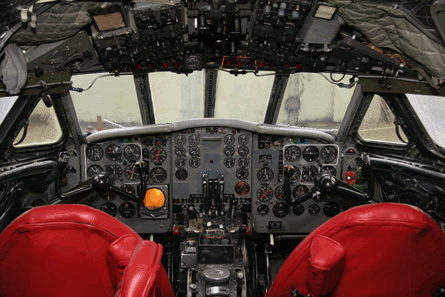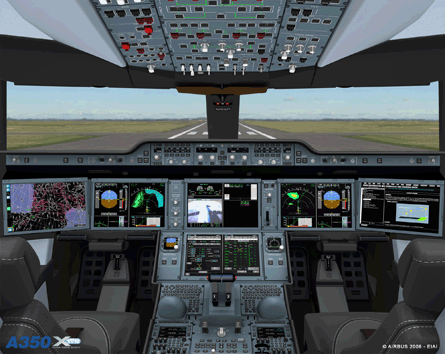In the 1930s the relationship between flying and safety was summarised cryptically by a First World War pilot who became an aviation insurer, Capt A G Lamplugh. He provided the industry with what is still recognised as the definitive description of the risks faced by those who would fly: "Aviation in itself is not inherently dangerous. But to an even greater degree than the sea, it is terribly unforgiving of any carelessness, incapacity or neglect."
Somewhat earlier, Wilbur Wright had written to his father: "In flying I have learned that carelessness and overconfidence are usually far more dangerous than deliberately accepted risks." Wright's assessment of the safety issue is more or less synonymous with the well-established concept of "calculated risk", and pre-dates by about 90 years today's increasingly precise science of "risk management". This science is based on a tacit acceptance that no activity, including flying, can be completely risk-free, but that risk should be managed so as to remain within acceptable bounds. What is deemed acceptable is subjective and varies according to societal perceptions.
 |
|---|
Flight International regularly analyses the industry's safety record |
In the hope of globalising the approach to risk in aviation, the International Civil Aviation Organisation and the world's leading aviation regulators have, in recent years, required that a closed-loop "safety management system" (SMS) should be a part of every commercial flying organisation. But the SMS concept took 100 years of aviation to emerge, and it will be years before it has been globally implemented.
No aviation safety expert today could add anything of substance to the wisdom contained in Lamplugh's and Wright's observations. Aviation is, however, clearly far safer than it used to be in the early 1900s. So what other factors have brought about the improvement?
The accumulation of knowledge naturally plays its part. Here is a classic example: the father of the Flight Safety Foundation Jerry Lederer said in 1939 that "strange as it may seem, a very light coating of snow or ice, light enough to be hardly visible, will have a tremendous effect on reducing the performance of a modern airplane". As Lederer observed, some phenomena and their consequences - especially pertaining to meteorological factors like icing, windshear and microbursts - can only be learned from experience or experiment. After the experience has been documented, however, to become useful, the knowledge has to be disseminated to, and then learned and applied by, every individual aviator.
But knowledge and wisdom often gets lost or goes unheeded. Lederer's icing advice did. In 2005 the US Federal Aviation Administration echoed the essentials of his statement on icing in an airworthiness directive issued 70 years after he drew attention to the problem. The agency said: "Even small amounts of frost, ice, snow or slush on the wing leading edges or forward upper wing surfaces can cause loss of control at take-off." The stimulus for the AD was an accident report about the crash on take-off of a Bombardier Challenger 604 business jet at Birmingham, UK in January 2002. It had been left on the ramp overnight and not de-iced before take-off was attempted.
An obvious factor in safety improvement is the progressive gain in the robustness and reliability of airframes, engines and systems, including avionics, navigation equipment and techniques. But in parallel with these advances, aircraft were designed to fly much faster, perform a greater variety of tasks, and operate in worse weather conditions. As the equipment's capabilities advanced, so did aviators' aspirations to get more from it.
The arrival of the turbine engine, in the form of both turboprop and turbojet, brought a huge increase in power, speed and range to aircraft, at the same time delivering significantly improved reliability compared with the big piston engines that were reaching their development limits in the late 1950s.
As the machinery became more reliable, and therefore the causes of accidents were less often technical, the role of the human became the focus of those who would improve aviation safety, and the study of human factors in aviation got seriously under way in the 1970s. This covered not only the on-board crew, but human factors in maintenance.
Cockpit or flightdeck design was slowly improved in ergonomic terms during the 1960s, and when - at the dawn of the 1980s - cathode ray tube instrument displays (later replaced by liquid crystal displays), digital avionics and flight management computers became ascendant, a new piece of human factors terminology was born: crew situational awareness.
 |
|---|
Max Kingsley-Jones/Flight International |
Modern airliner cockpit evolution from the de Havilland comet (Above) to the Airbus A350XWB (Below)
 |
|---|
Max Kingsley-Jones/Flight International |
The need for crew situational awareness had always existed, but the new potential for integrating all the flight, performance and navigational information graphically on large displays provided an opportunity to feed the pilots with intuitive information, rather than disparate pieces of data from which the pilots had to create a situational picture in their heads. This not only reduced the potential for individual confusion, but provided both pilots with the same picture of what was going on, rather than allowing each to develop a picture of what the situation was, which might not be identical to that of the other pilot. Any difference could not be assessed unless the non-flying pilot noticed a trajectory or performance divergence from what he was expecting to see.
In the 1970s KLM had invented the concept of crew resource management (CRM) with the objective of improving the way crew communicated and worked together, and that concept has, at least officially, been accepted globally as a critical part of multi-crew pilot training.
Technology alone has rarely eliminated a serious risk, but since the mid-1990s it looks as if it has achieved that, virtually wiping out what had been the worst killer accident category - controlled flight into terrain. Flying a serviceable aircraft into terrain without realising that is what is happening until too late is the result of loss of situational awareness. When Honeywell upgraded the ground proximity warning system (GPWS) to the Enhanced GPWS (EGPWS), pilots were provided with a graphic picture of their position and height relative to terrain, plus audio alerts. Since the EGPWS (generically know as a terrain awareness and warning system - TAWS) has been introduced there have been no CFIT accidents involving aircraft fitted with it - but CFIT disasters continue in the remaining 5% of the world's big jet airline fleet that do not have it.
WINDSHEAR ALERT
Another piece of equipment, developed since the late 1980s, which has had a major impact on safety is the windshear alert. This emerged as meteorologists came to a fuller understanding of phenomena such as windshear and microbursts associated with storm cells, and how these can affect aircraft close to the ground just after take-off and on approach. This knowledge did two things: it changed pilots' awareness of the risk represented by storm clouds close to their approach or departure paths, and led to the development of windshear alert systems. This has not eliminated accidents caused by windshear, but it has reduced the numbers and severity.
With the arrival of information technology, not only did the potential for creating individual operators safety information databases arise, but also the potential for industry-wide sharing of the derived knowledge of occurrence trends (see historical perspectives). The ability conferred on airlines to download operational and technical diagnostic data from aircraft through digital flight data recorders or quick access recorders enabled them to recognise where operational best practise was breached - intentionally or otherwise - and to spot the technical signs of impending equipment failure. This has pushed the aviation world into an era where risk management has become a data-driven science rather than an experience-driven art.
From the 1970s, more of the world's emerging economies - some of which did not have a long aviation tradition - developed airlines with spreading international networks, so the need arose for more effective systems to police global aviation standards. To this end the ICAO was given a mandate for its Universal Safety Oversight Audit Programme in 1999, under which it carries out a review of each state's aviation safety oversight system and makes a synopsis of the results available on its website.
At operator level, the International Air Transport Association announced in 2006 that its biennial operational safety audit (IOSA) would become compulsory for all its member airlines. Any member carrier that fails the IOSA, or does not arrange to undergo one, loses its membership, and some have done.
But apart from these direct pressures on the aviation industry to raise its safety standards, the airlines became subject to another powerful incentive to improve: since the 1980s, the business of international commercial aviation has been gradually liberalised, allowing greater competition and therefore greater passenger choice. Where there is a choice of another airline to fly with, a carrier that has suffered an accident also suffers commercially.
In the 105 years of powered flight the world has moved from fragile, failure-prone machines to robust, reliable ones, and from cerebral risk awareness to data-driven risk management, but the people who operate and regulate the system remain its greatest variable.
Operations and safety editor David Learmount joined Flight International in 1979 as an air transport reporter. He was previously an RAF Lockheed C-130 pilot and flying instructor
Source: Flight International
















